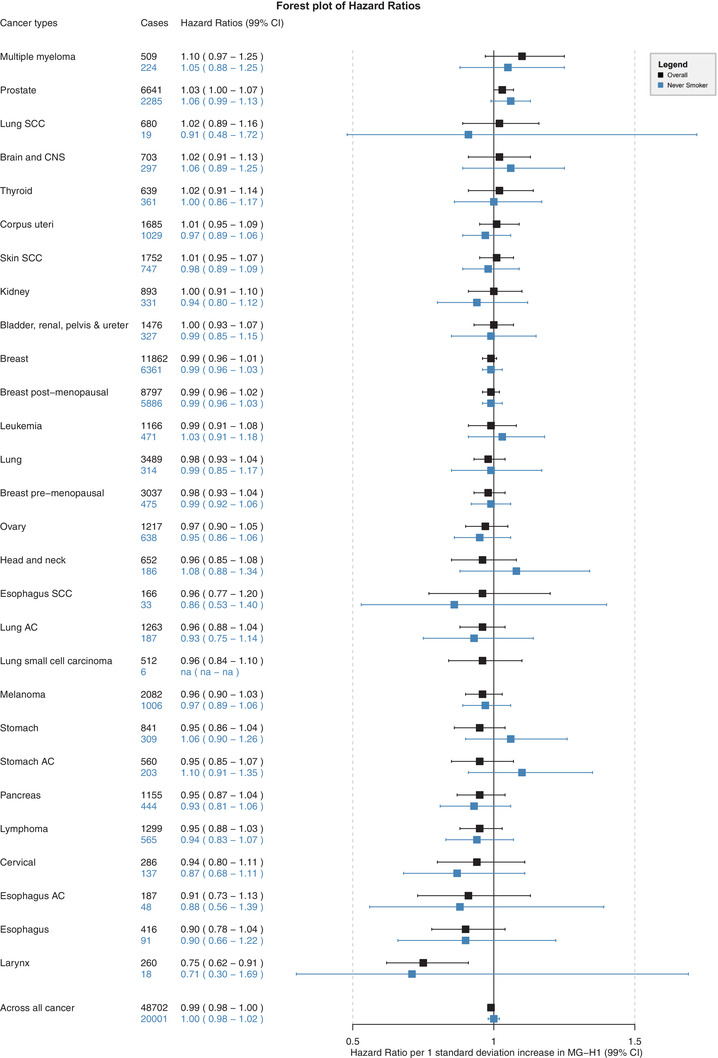FIGURE 1.

Hazard ratios and 99% confidence intervals (CI) for associations between MG‐H1 and risk of cancer overall and several individual cancer sites in the full cohort and in never smokers. MG‐H1, N‐delta‐(5‐hydro‐5‐methyl‐4‐imidazolon‐2‐yl)‐ornithine; CNS, central nervous system; AC, adenocarcinoma; SCC, squamous cell carcinoma; na, not applicable ‐ sample size for lung small cell carcinoma was too low to estimate associations among never smokers. Number of cases and hazard ratios (99% CI) are shown for full cohort (in black) and among never smokers (in blue). Hazard ratios and 99% CI per 1 standard deviation increase in MG‐H1 derived from Cox proportional hazard models. Each model was adjusted for total energy intake (kcal/day), BMI (kg/m2), baseline alcohol intake (g/day), smoking intensity (never, currently smokes 1‐15 cigarettes/day, currently smokes 16‐25 cigarettes/day, currently smokes 26 + cigarettes/day, former smoker who quit less than 10 years ago, former smoker who quit 11‐20 years ago, former smoker who quit more than 20 years ago, current occasional smoker of pipes or cigars, and missing), the Cambridge physical activity index (inactive, moderately inactive, moderately active, active, and missing), educational level (none, primary completed, technical/professional, longer education incl. university degree, and missing), self‐reported prevalent diabetes (no, yes, missing), and the modified relative Mediterranean Diet Score (mrMDS). Models were stratified by sex, age at recruitment (1‐year categories), and center; however, depending on the anatomical cancer site, additional stratification variables were applied to achieve proportionality of hazard assumption
